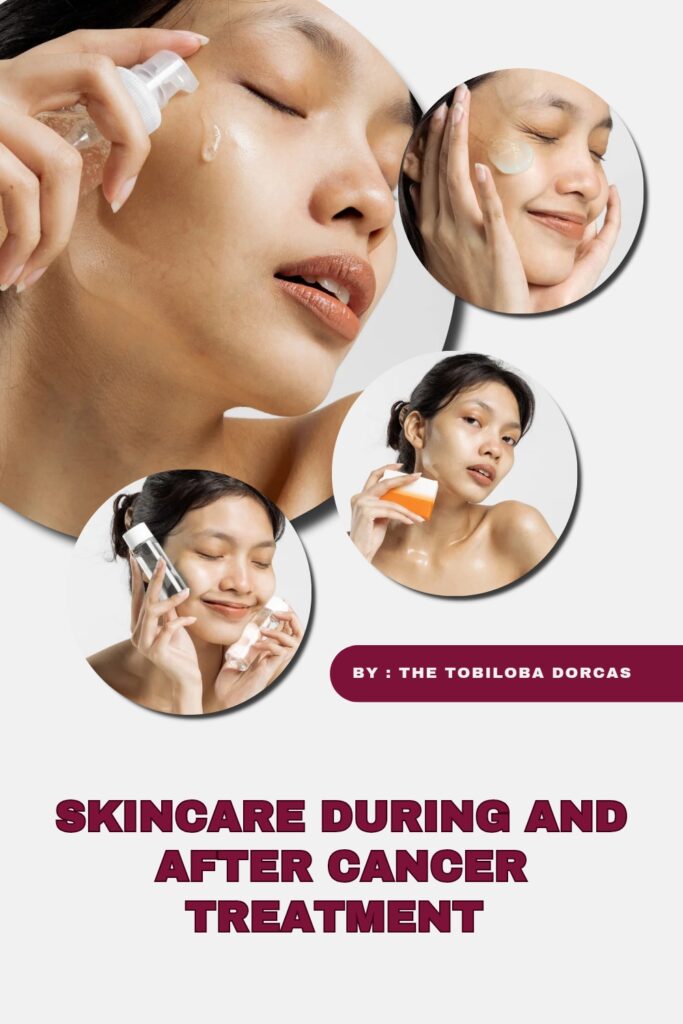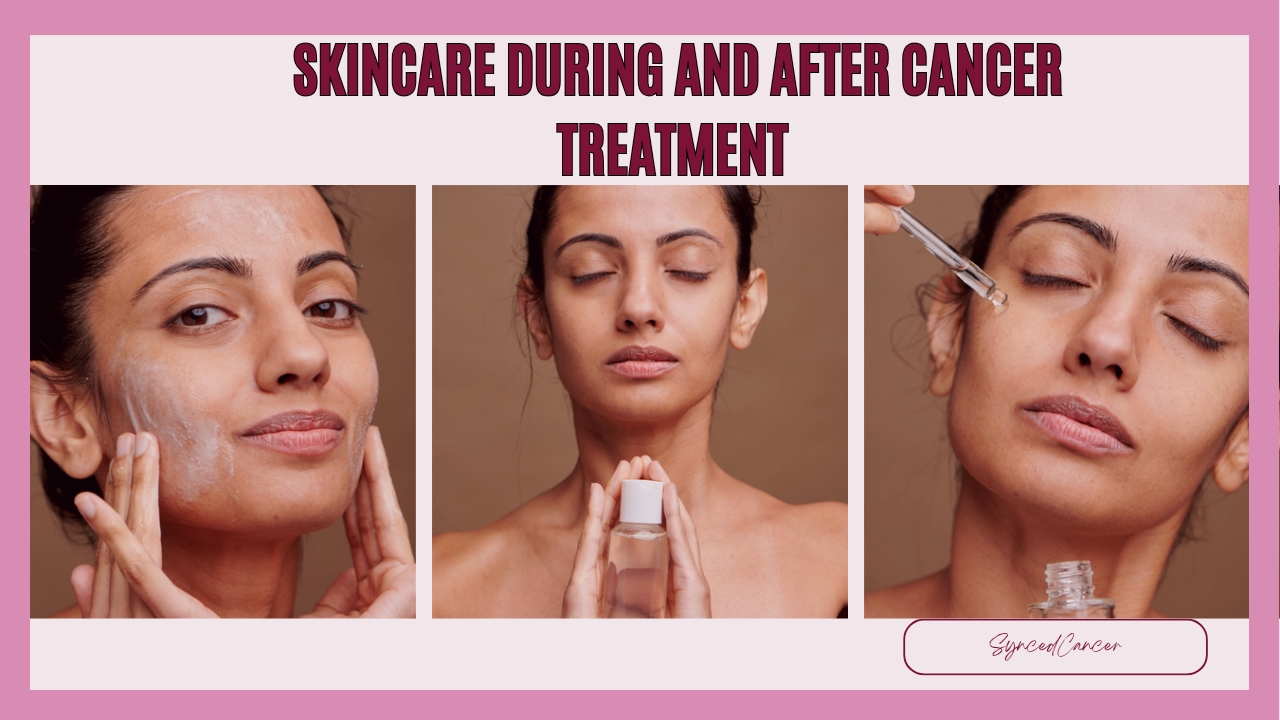Skincare during and after breast cancer treatment
Breast cancer treatment is a challenging and often life-altering journey, impacting not only the internal systems of the body but also leaving noticeable effects on the skin. Chemotherapy, radiation therapy, hormone therapy, and other cancer treatments can lead to a range of skin issues, from dryness and sensitivity to more severe reactions like radiation burns. Proper skincare during and after breast cancer treatment is crucial for maintaining skin health and improving overall well-being. This delves into the various skin challenges faced by patients and provides detailed advice on skincare strategies to mitigate these issues, emphasizing the importance of both physical and emotional care.
Understanding Skin Changes During Breast Cancer Treatment
- Chemotherapy-Related Skin Changes
Chemotherapy targets rapidly dividing cancer cells, but it also affects other rapidly dividing cells in the body, including those in the skin. This can lead to several dermatological issues:
- Dryness and Flakiness: Chemotherapy can significantly reduce the skin’s moisture levels, leading to dryness and flakiness. The skin may feel rough, tight, and look dull. This dryness is often due to the reduced activity of sebaceous glands, which produce natural oils that keep the skin moisturized.
- Rashes and Irritation: Certain chemotherapy drugs can cause rashes, redness, and irritation. These reactions can range from mild to severe and may require medical intervention. Some patients experience a condition known as “chemo rash,” characterized by itchy, red bumps or blisters.
- Hyperpigmentation: Some chemotherapy agents can lead to hyperpigmentation, resulting in dark spots or discoloration on the skin. This can be particularly noticeable on areas exposed to the sun, such as the face, neck, and hands.
- Photosensitivity: Chemotherapy can increase the skin’s sensitivity to sunlight, making it more prone to sunburn and damage from UV radiation.
- Radiation Therapy-Related Skin Changes
Radiation therapy targets cancer cells in specific areas, often causing localized skin reactions. The intensity and nature of these reactions depend on the radiation dose and the area being treated:
- Radiation Dermatitis: This condition ranges from mild redness and irritation to severe burns, peeling, and ulceration. Radiation dermatitis typically occurs in the area receiving radiation treatment and can significantly impact the patient’s quality of life.
- Dryness and Tightness: The treated skin area may become dry, tight, and itchy. This is due to the damage radiation causes to the skin’s moisture barrier, leading to water loss and increased sensitivity.
- Increased Sensitivity: The skin can become highly sensitive to touch, temperature changes, and friction. Even mild friction from clothing can cause discomfort and exacerbate skin reactions.
- Long-Term Changes: Over time, radiation can cause the skin to become thicker, firmer, and more prone to fibrosis (scarring). This can affect the skin’s elasticity and appearance.
- Hormone Therapy-Related Skin Changes
Hormone therapy is used to treat hormone receptor-positive breast cancers and can also affect the skin:
- Dryness and Thinning: Hormone therapy can cause the skin to become dry and thin, increasing the risk of irritation and injury. This is often due to reduced estrogen levels, which are important for maintaining skin hydration and thickness.
- Acne and Oily Skin: In some cases, hormone therapy can lead to acne and increased oil production. This is more common with therapies that involve androgen suppression or manipulation.
- Hair and Nail Changes: Hormone therapy can also impact hair and nails, causing hair thinning or loss and making nails more brittle and prone to splitting.

Skincare Strategies During Treatment
Proper skincare during breast cancer treatment involves addressing the specific issues caused by chemotherapy, radiation, and hormone therapy. Here are detailed strategies to help manage these skin challenges:
- Moisturization
Keeping the skin well-moisturized is essential to combat dryness and maintain the skin’s barrier function:
- Gentle Moisturizers: Use fragrance-free, hypoallergenic moisturizers that are rich in emollients and humectants. Ingredients like glycerin, hyaluronic acid, and ceramides are excellent for retaining moisture. These products help to restore the skin’s natural barrier and prevent moisture loss.
- Ointments and Creams: Thicker ointments and creams provide a more substantial barrier than lotions. Apply these after bathing to lock in moisture. Look for products containing petrolatum, shea butter, and lanolin for extra hydration.
- Hydration: Drink plenty of water to help keep the skin hydrated from the inside out. Proper hydration supports overall skin health and can mitigate some of the dryness associated with treatment.
- Sun Protection
The skin can become more sensitive to UV radiation during cancer treatment, making sun protection vital:
- Broad-Spectrum Sunscreen: Use a broad-spectrum sunscreen with an SPF of 30 or higher. Look for physical blockers like zinc oxide or titanium dioxide, which are less likely to irritate sensitive skin. Apply sunscreen generously to all exposed skin and reapply every two hours when outdoors.
- Protective Clothing: Wear protective clothing, such as wide-brimmed hats, long sleeves, and long pants, to shield the skin from the sun. UV-protective clothing can provide additional protection against harmful rays.
- Avoid Peak Sun Hours: Try to stay indoors during peak sun hours (10 a.m. to 4 p.m.) when UV radiation is strongest. Seek shade whenever possible and use umbrellas or sun shelters when outdoors.
- Gentle Cleansing
Harsh soaps and cleansers can exacerbate skin dryness and irritation:
- Mild, Fragrance-Free Cleansers: Choose gentle, non-foaming cleansers that are free of fragrances, dyes, and harsh chemicals. Avoid products with alcohol, which can dry out the skin. Look for cleansers with soothing ingredients like aloe vera and chamomile.
- Lukewarm Water: Use lukewarm water instead of hot water, as hot water can strip the skin of natural oils. Hot water can also exacerbate dryness and irritation.
- Pat Dry: After washing, pat the skin dry with a soft towel instead of rubbing it. Rubbing can cause further irritation and damage to sensitive skin.
- Managing Radiation Dermatitis
Radiation dermatitis requires specific care to soothe and protect the affected skin:
- Cool Compresses: Apply cool, damp cloths to the affected area to reduce inflammation and discomfort. Cool compresses can help soothe irritated skin and reduce redness and swelling.
- Topical Steroids and Creams: Use topical steroids as prescribed by your healthcare provider to reduce inflammation. Non-prescription creams containing calendula or aloe vera can also provide relief. These natural ingredients have anti-inflammatory and soothing properties.
- Avoid Irritants: Avoid using products with alcohol, fragrances, or other potential irritants on the treated area. Opt for gentle, hypoallergenic products specifically designed for sensitive skin.
- Loose Clothing: Wear loose-fitting clothing made from soft, breathable fabrics to minimize friction and irritation. Avoid tight clothing and undergarments that can rub against the treated skin.
- Special Care for Hands and Feet
Chemotherapy can lead to hand-foot syndrome, causing redness, swelling, and pain on the palms and soles:
- Moisturize Frequently: Apply thick, emollient-rich creams or ointments to hands and feet several times a day. Look for products with urea or ammonium lactate to help soften and hydrate the skin.
- Avoid Friction: Wear comfortable shoes and avoid activities that cause friction on the hands and feet. Use cushioned insoles and socks to reduce pressure on the feet.
- Cool Baths: Soaking hands and feet in cool water can provide relief from pain and inflammation. Avoid hot water, which can worsen symptoms.
Skincare After Treatment
After completing breast cancer treatment, the skin may still need special attention as it recovers from the effects of therapy. The following strategies can help maintain and restore skin health:
- Continued Moisturization:
Maintaining a regular moisturization routine helps keep the skin hydrated and supports the healing process:
- Hydrating Products: Continue using hydrating products with ingredients like hyaluronic acid, shea butter, and ceramides. Regular application helps restore the skin’s natural moisture balance and improves its texture and elasticity.
- Night Creams: Consider using a rich night cream or overnight mask to provide intensive hydration while you sleep. Nighttime is an optimal period for skin repair and regeneration.
- Addressing Hyperpigmentation
Hyperpigmentation may persist after treatment and can be managed with specific skincare products:
- Brightening Agents: Products containing ingredients like vitamin C, niacinamide, and licorice extract can help lighten dark spots and even out skin tone. These ingredients inhibit melanin production and promote skin cell turnover.
- Exfoliation: Gentle exfoliation with alpha hydroxy acids (AHAs) or beta hydroxy acids (BHAs) can help remove dead skin cells and improve skin texture. However, avoid over-exfoliating, as it can irritate sensitive skin.
- Professional Treatments: Consult a dermatologist for treatments like chemical peels, microdermabrasion, or laser therapy to address persistent hyperpigmentation. These procedures can offer more dramatic results but should be done under professional supervision.
- Sun Protection
Sun protection remains crucial even after treatment to prevent further damage and hyperpigmentation:
- Daily Sunscreen Use: Continue using sunscreen daily and reapply as needed, especially when spending extended periods outdoors. Sunscreen should be part of your daily skincare routine, regardless of weather or season.
- Sun Protective Habits: Incorporate sun-protective habits into your lifestyle, such as seeking shade, wearing UV-protective clothing, and avoiding tanning beds.
- Monitoring for Skin Changes
Regularly monitor your skin for any changes or new issues that may arise:
- Skin Exams: Perform regular self-exams to check for new or unusual skin changes, such as new moles, growths, or persistent rashes. Early detection of skin abnormalities can lead to prompt medical intervention.
- Follow-Up Appointments: Keep up with regular follow-up appointments with your healthcare provider to monitor skin health and address any concerns. Your healthcare team can provide guidance on managing ongoing skin issues and recommend appropriate treatments.
Conclusion
Skincare during and after breast cancer treatment is a vital component of overall care, helping to alleviate physical discomfort and enhance emotional well-being. By understanding the specific skin challenges associated with chemotherapy, radiation therapy, and hormone therapy, patients can adopt effective strategies to protect and nourish their skin. Ongoing skincare routines, sun protection, and regular monitoring can help maintain skin health and improve quality of life during and after the cancer journey. With the right care and support, breast cancer survivors can navigate these challenges and achieve better skin health and well-being.
The journey through breast cancer treatment is undoubtedly challenging, but with proper skincare and a holistic approach to health, patients can support their skin’s recovery and maintain a sense of normalcy and confidence. This comprehensive approach to skincare not only addresses physical symptoms but also contributes to the emotional resilience needed to face and overcome the trials of cancer treatment.
REFERENCES
EthosMedSpa – https://ethosmedicalspa.com/skin-care-after-cancer-treatment/
Assessed 25th June, 2024










Pingback: The Dark Side of Beauty: Are Your Skincare Products Safe?